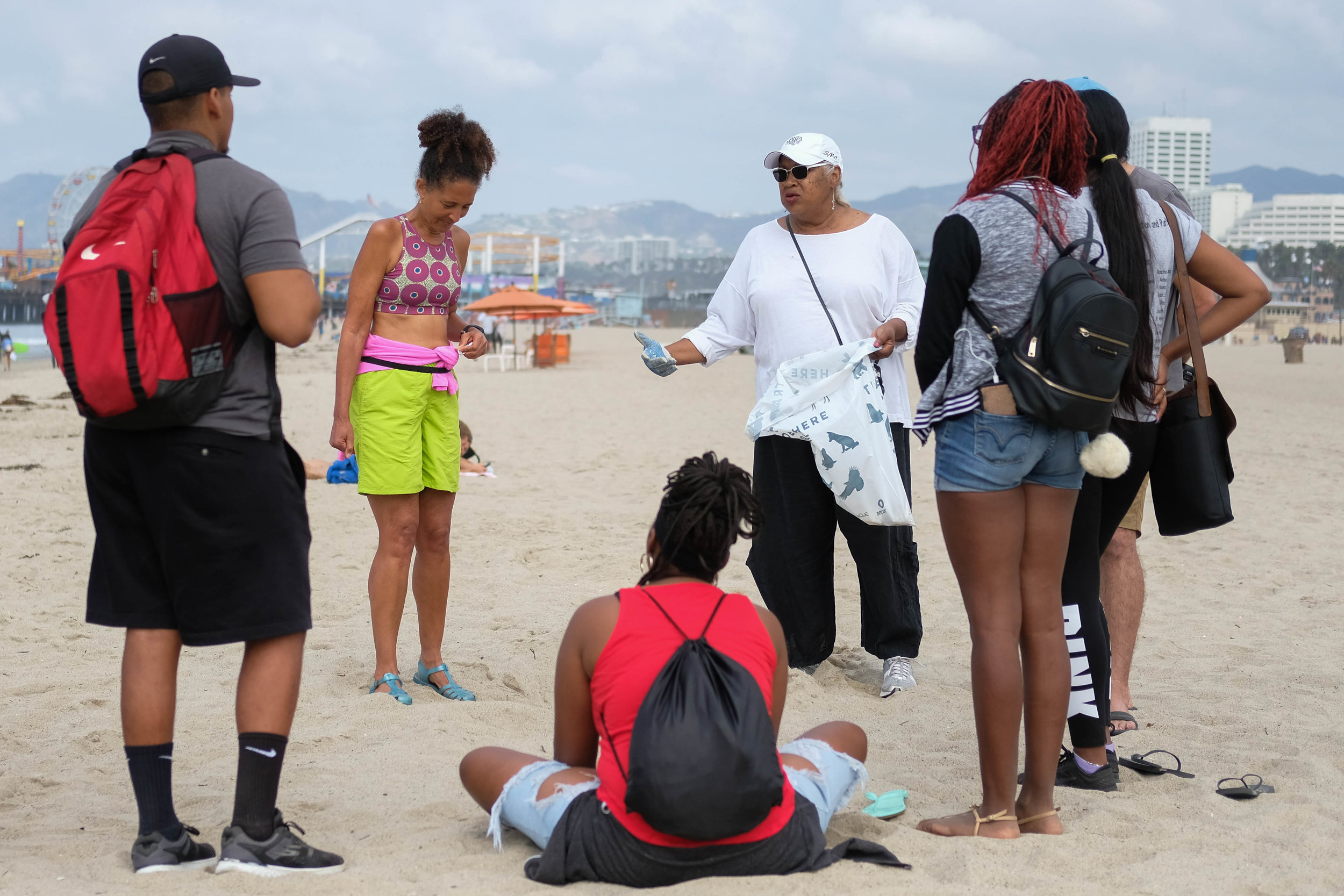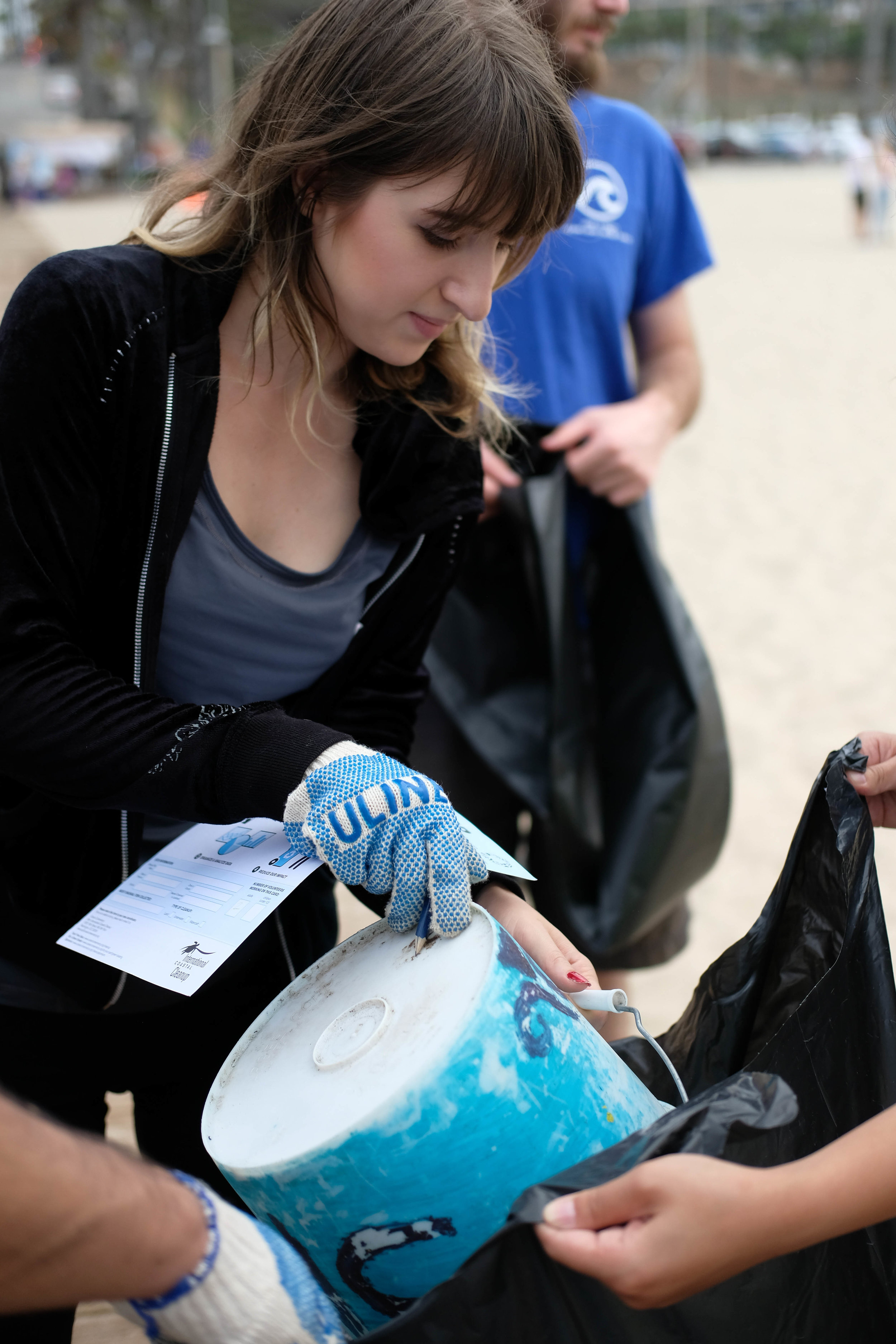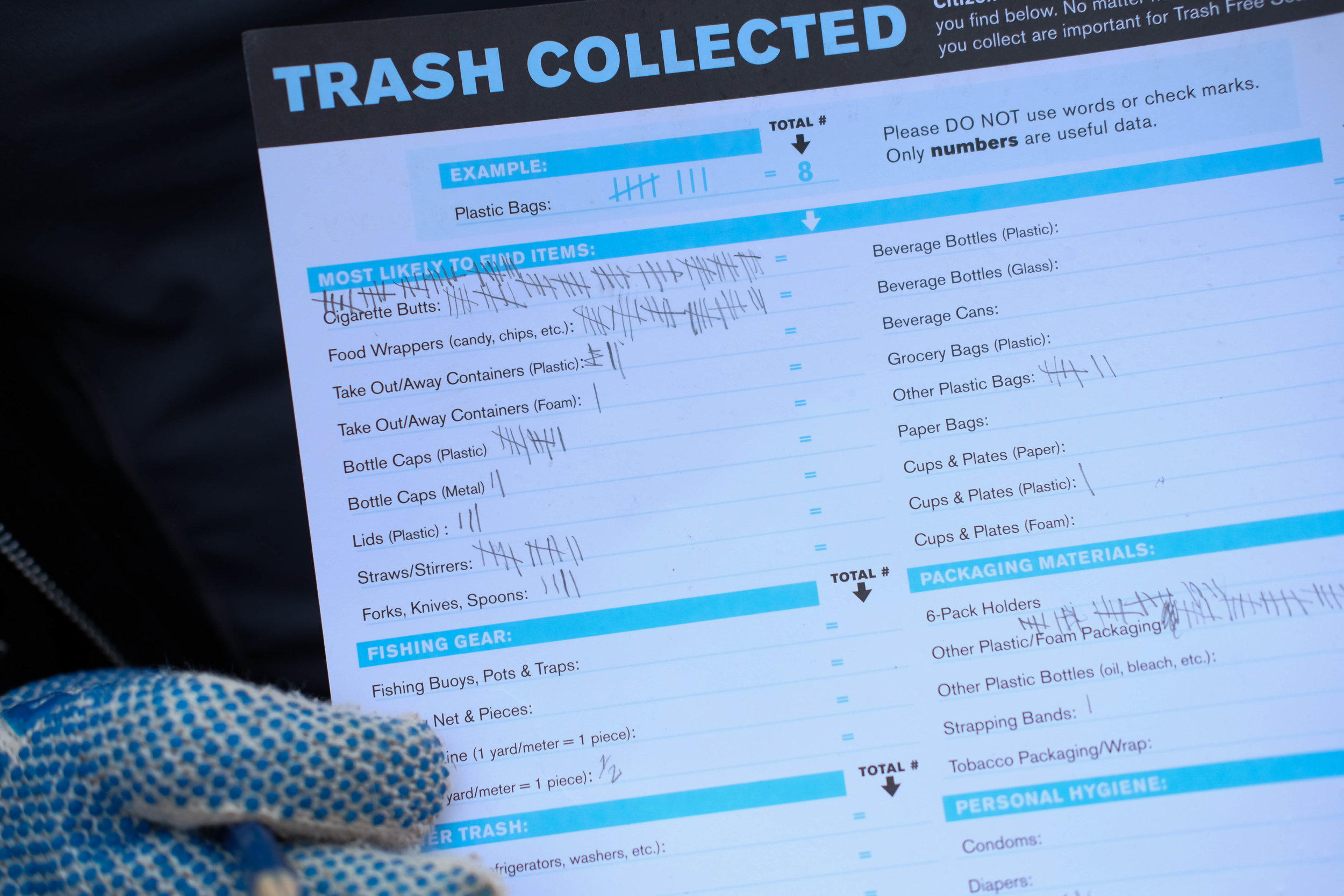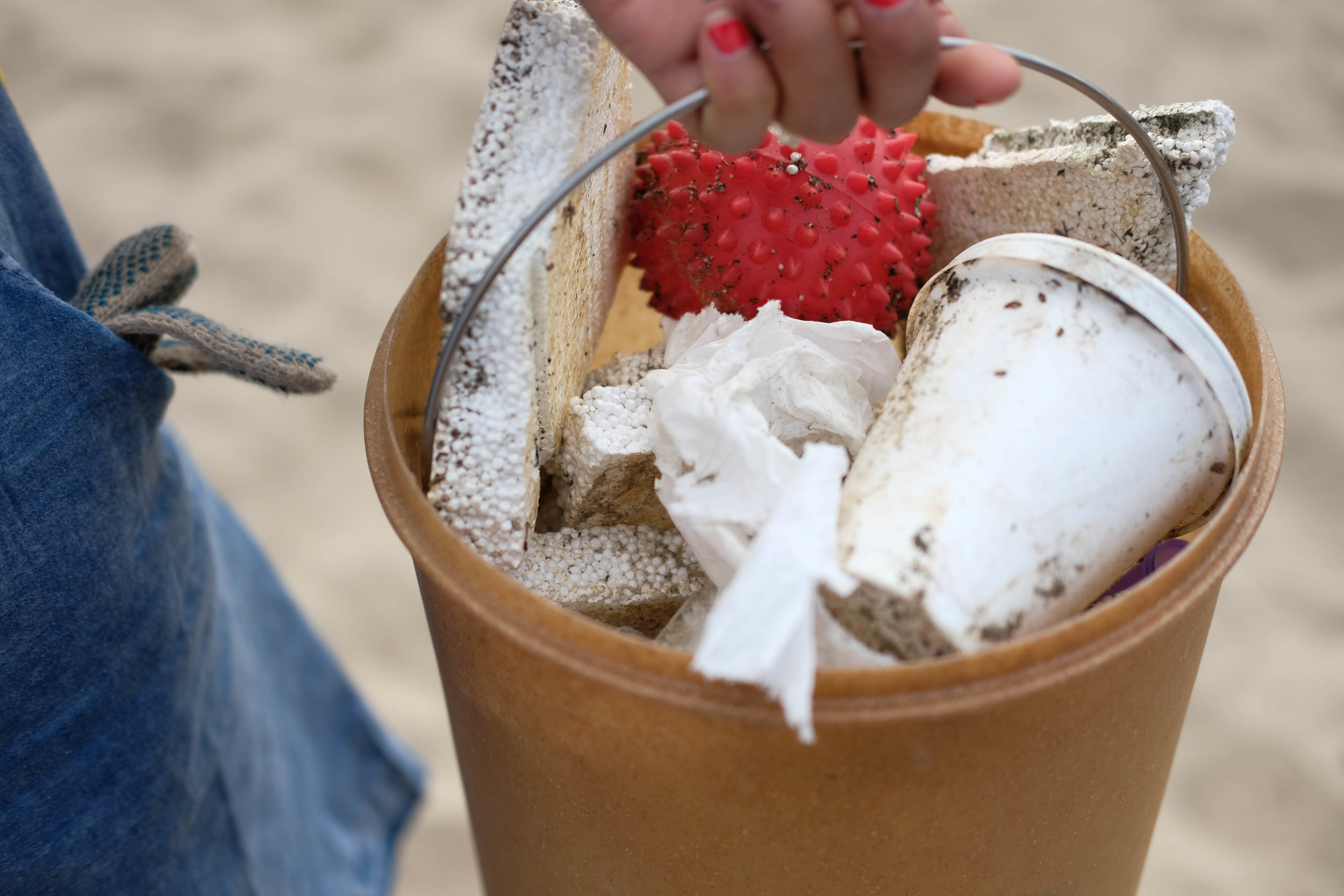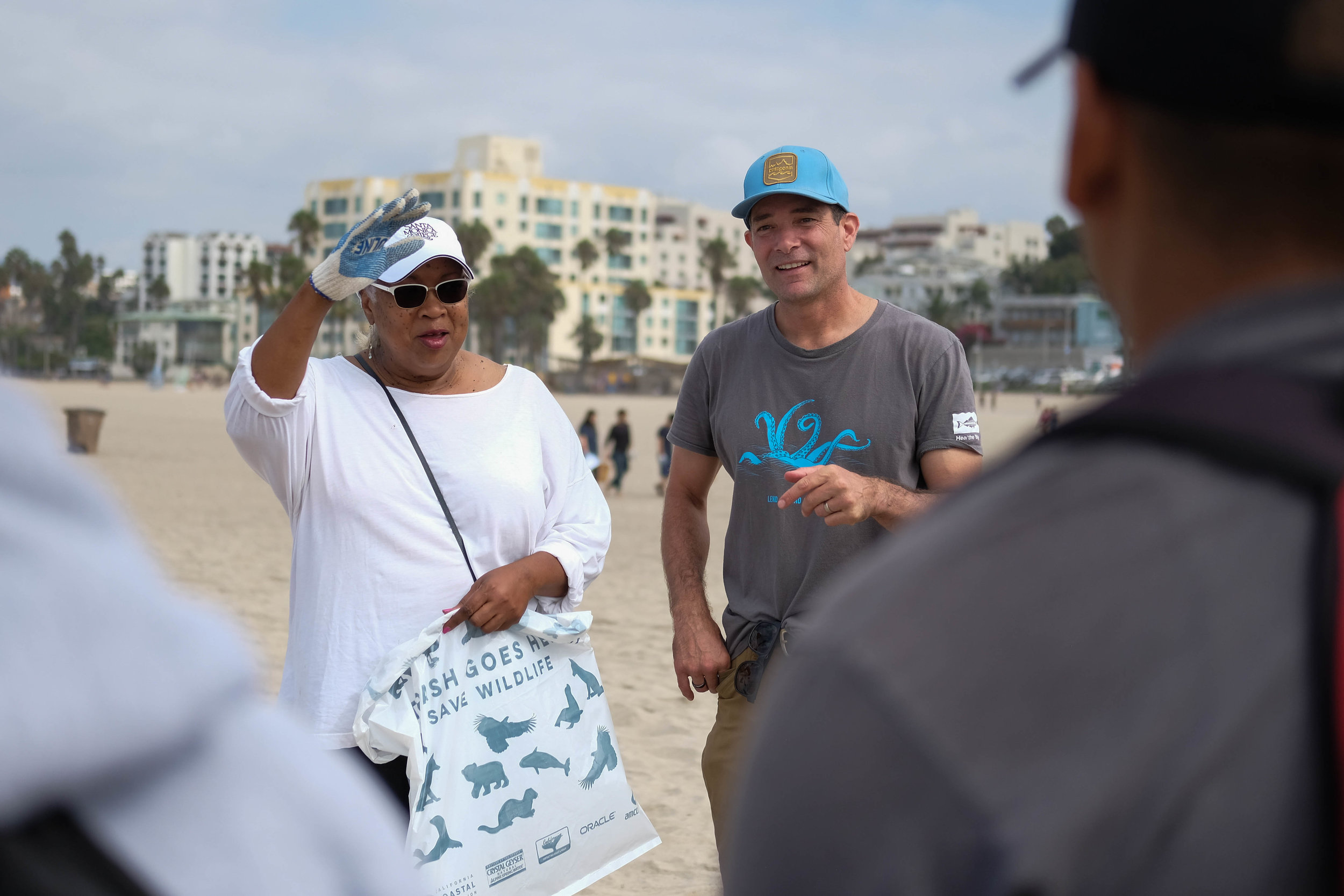Healing the Bay: Coastal Cleanup Day 2017
Dotted along the coast of Venice Beach with a backdrop of grey skies, early morning beachgoers for miles carried buckets and scanned the sands. Instead of filling their buckets with typical beach treasures such as shells, stones, or the occasional starfish, these shore hunters were filling them with cigarette filters, straws, and plastic bottle caps.
Coastal Cleanup Day 2017 was under way this Saturday, September 20th, from California’s coast to others all over the world. An estimated 500,000 volunteers across the globe picked up millions of pounds of debris. Organizers from Heal the Bay, a volunteer group committed towards keeping Californian waterways clean, predicted 60,000 people would come out to participate in the Golden State alone.
Volunteer groups from all over Los Angeles combed the beaches of Venice and Santa Monica. Los Angeles County Girl Scouts sporting tee shirts, shorts, and sashes were working towards environmental badges to add to their collections. Buses dropped off inner city school kids, who can enjoy spending time away from concrete playgrounds to help clean the coast and learn about why keeping their streets clean is so important to our ecosystem.
College students from all over southern California also came out to support the cleanup. Santa Monica College brought a substantial showing of students, particularly from the environmental and sustainability clubs.
Ferris Kawar, the sustainability manager at Santa Monica College and the advisor for environmental clubs such as Eco Action and Plastic Free SMC, was among the volunteer organizers who worked with Heal the Bay alongside the several African-American and Hispanic-American organizations. The environmental clubs have helped to organize, promote, and run the event for the last ten years. “It’s a global effort,” Kawar said. "Around the world, there are hundreds of thousands of people that are donating their time on this one day to clean up their towns, their waterways.”
Kawar explained why this effort is so important not only for the beach, but also for the inland. " When that first rain happens, that’s the worst of the worst," Kawar said. "You get all the oil and bird poop washed out and... comes back in onto our shores. So it’s really important that we clean it up before it makes its way out there."
He also spoke about how important it is for individuals in society to make the right choices for the environment. ”When you start to look at what we are finding, many bottle caps, many straws…whatever happened to using your lips?" Kawar said. "This whole disposable society, it’s just gotten out of hand.”
According to TerraCycle, who collects and recycles "the non-recyclable", over 300 million tons of plastic is produced, with the average person using 584 plastic straws, 230 paper plates, and 45 pounds of paper towels a year. Kawar believes things are starting to get better, though, because of city laws that have been put into place. “Thankfully places like Santa Monica…have had a Styrofoam ban in place for a while and a plastic bag ban in place…no smoking on the beaches…but we’re still going to see cigarette butts for decades," Kawar said.
One particular beach has a more historically important reason for being a part of Coastal Cleanup day. On a beach adopted by the Santa Monica College community, once known as “Inkwell”, there is a memorial site that commemorates its historical significance.
Carol Lemlein from the Santa Monica Conservancy, Santa Monica’s official historic preservation group, explained that during the Jim Crow era, most public places, including public peaches were segregated. This part of the beach was a place where African Americans felt comfortable. The site even has a memorial set up with photographs from that time period. The preservation group worked with Heal the Bay to get this location added to Coastal Cleanup Day.
Lemlein said the site also was a memorial for Nick Gabaldon, a surfer and former Santa Monica College student who lost his life in a surfing accident at the Malibu Pier. "He would paddle all the way up to Malibu in order to surf with the much more competitive surfers up in the Malibu area," Lemlein said. "We in Santa Monica commemorate his life as the first known surfer of color in this area.” Heal the Bay has a second event in June to celebrate Gabaldon’s birthday and life by teaching inner city kids how to surf and how to be ecologically responsible.
The day concluded with families and community members working together to support conserving southern California’s beaches. Santa Monica College’s president, Kathryn Jeffery, spent her time cleaning up the small pieces of plastic she sees so often in the sand. She explained how important it is, as a community member, to be involved in events like these. “I’m not a (beach) user in the same way that (others) are, but somebody out there is taking care of some other part of the planet that I do use," Jeffery said. "So we all do things, it’s a big cycle of support”.
As successful as the day is, President Jeffery made an observation many others before her have also made. “It is a world community. If only we all treated it that way more often," Jeffery said.

